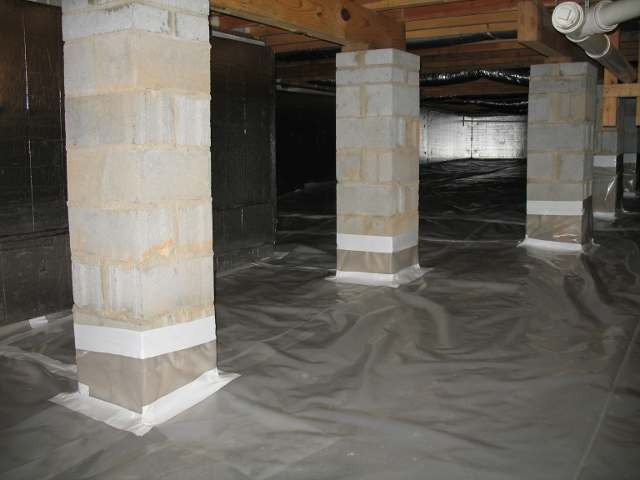Crawl Space Humidity Wrap Up
| tags: home
This is an update of my 2011 and 2009 posts on my attempts to control the humidity in the crawl space of my house in central North Carolina.
After running the dehumidifier from the previous post for about 15 months I decided it was time to come up with a more sustainable solution. The dehumidifier did the job, but I could hear it running (a lot) and I knew that it wasn't going to last forever.
The Advanced Energy Report showed that carefully sealing the crawl space and venting about 50 CFM of conditioned air into it would deal with the humidity problems once and for all. My friend Herman's new house was built that way, and Brian had his converted with good results. After toying with the idea of doing the work myself, I realized that it was much too much for me and decided to find professionals for the job.
I contracted with Brad Dehring of Crawlspace Doctor to do the work after getting three proposals. I'm very pleased with their work. Here is a brief description of the job.
- They removed the old damp, moldy insulation from the floor joists.
- They cleaned mold from the wood and pipes and got up all the bits of rock and junk from the floor.
- They sealed every hole, gap, and crack in the house floor, sill plate and foundation walls.
- They had a plumber come in to temporarily remove the water heater so they could put plastic and insulation below and behind it.
- They covered the concrete block walls with 10 mil plastic with a 3 inch gap for termite inspection; every seam is taped.
- They covered the plastic on the walls with 2-inch foam insulation with foil on the surface. They neatly cut around every pipe and wire that passes through the walls.
- They taped all the edges, joints, and fastener heads with aluminum tape.
- They covered the floor with 10 mil plastic taping it to the plastic from the walls.
- They installed a special purpose 50 CFM crawl space vent on the HVAC plenum near the center of the crawl space; it lets air flow out when the system is running but not back in.
- They replaced the access door with an insulated and weather stripped wooden door.
- They cleaned up completely; the space is cleaner than it ever has been.
- They fixed several small unrelated problems.
I was wise to get professionals to do the job. They had two or three young guys who knew what they were doing here for six days. Crawling around under there for one day would have killed me!
It's been two weeks since they completed the job and the dew point under the house is staying between 57 and 59 degrees. This is the same, within my measurement accuracy, as the dew point inside the house; perhaps they are coupled. Or maybe it will drop lower as the wood and concrete blocks gradually dry out. In any case, it is already low enough to prevent condensation and mold.

I hope this is the last installment in my crawl space humidity series but I will update this post if I see significant changes.